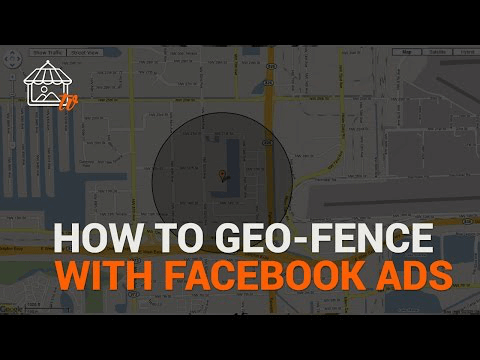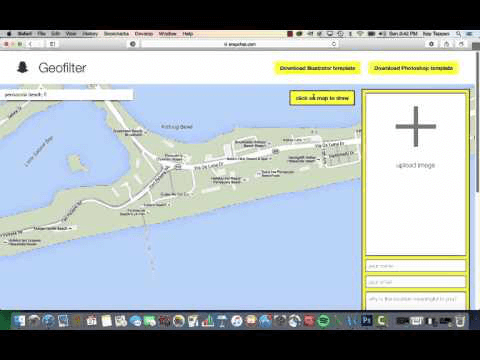
All over the globe, digital marketers are looking for new and more effective ways to improve their lead generation and sales volumes. Most marketing tactics, such as SEO, PPC, Google AdWords, and Influencer Marketing are either saturated or require an innovative approach.
Fortunately, in the land of digital marketing, new disruptive technologies are emerging more frequently than ever. Geofence Advertising is one such technology that is reshaping the marketing world as we speak. Geofencing is a part of location-based marketing that is poised to take personalized hyperlocal marketing to a whole new level.
Let’s learn more about what geofence advertising is, how it works, and what the benefits are.
1. What Is Geofence Advertising?
Geofencing is a location-based digital marketing tool. It allows businesses to access the exact location of mobile users, allowing them to display an advertisement to people in a particular area at a specific time.
You can target not just zip codes or larger citywide sections, but also individual buildings. You can even geofence a 5ft by 5ft square if you want to! For example, you can target the individuals stepping into a shopping mall, a convention, or a conference through direct-to-mobile advertising. In short, it takes a highly targeted form of location-based marketing.
2. How Does Geofencing Work?
Geofence advertising makes use of GPS, RFID, Wi-Fi, or cellular data to display the desired advertisement to the people in a targeted area. First, using GPS or RFID-enabled software, a digital boundary is established around one or more locations. For example, it can be a hotel where people are gathering for a conference associated with your product or service.
Whenever an individual with a mobile phone steps in and out of this fence, the virtual geofence will trigger a response, as per your specifications. However, mobile users need to opt-in to location services for the geofence to work.
There are two ways to display the advertisements – including mobile apps and browsers. Almost all leading social networking apps, and many retailers and event organizers use mobile apps to send notifications to customers. For example, Facebook allows you to check into a building, landmark, or city and share location-based filters, stickers and other content using geo-location. Geofencing technology will also use your device’s location to deliver relevant ads.
3. Benefits of Geofencing
Despite the rapid growth of e-commerce, you have to access many local offline services like law, healthcare, car dealerships, and beauty salons in-person. As a result, geofence advertising comes with plenty of benefits for local businesses such as stores, cafes, and restaurants.
- Track Your Online Advertising to Offline Footfall
While many small business owners have started using digital marketing, they fail to track the effectiveness of their online efforts on their offline conversions. Geofencing, however, is proving to be a game changer in this regard.
For instance, you can create two separate geofencing locations.
- Location A (Target Zone) – It can be anything like your competitors’ store or any other venue.
- Location B (Conversion Zone) – It can be your own store or business.
When a customer enters Location A, you can target them with the desired advertisement. When the same customer goes to Location B, your geofencing parameters will recognize their visit as an offline conversion. So, you can quickly determine the number of online to offline conversions.
- Flexible Creative Personalization
You can personalize geofence advertisements by targeting a specific group of people in the same area at a granular level. For example, you can target just the individuals who have come for a concert in a hotel, separating them from those stepping into the hotel lobby.
But, once the event is over, you can send a different advertisement, say for an upcoming concert. So, unlike most traditional marketing channels, geofencing offers extremely flexible personalization options.
- Real-Time Analytics
In geofencing, you can start collecting user behavior data the moment people step into your target area. You can quickly find out if the current geofencing parameters are working in your favor, and take the next steps accordingly.
- Better ROI
With geofencing, you are sending advertisements to the people who are most likely to buy your product or service. It brings your business in front of the right people, at the right time and place. Thus, geofencing can reduce your advertising waste and increase conversions, resulting in better ROI.
- Compare Natural Foot Traffic versus Geofence Footfall
You can compare the number of footfalls during the geofencing campaign with the average natural foot traffic in your store. This means you can calculate the percent change in total foot traffic during the campaign, which in turn, allows you to assess your marketing efforts more critically.
- Expansive Reach
Geofencing provides you with a far better reach compared to other location-based marketing methods such as zip code targeting. Better reach is more likely to translate into higher conversions.
- Access Numerous Apps and Websites
Depending on your geofencing agency, you can get access to thousands of apps and websites to send your advertisements. These apps may include social media apps, games, and service apps, among others.
- No Physical Beacons Required
Not many geofencing agencies rely on beacons nowadays. Beacons are not only cumbersome to handle, but also restrict the area of exposure, resulting in lower conversions. Most new geofence systems use technologies such as GPS and RFID instead.
- Target People Even after They Leave the Event
By now, it is clear that geofencing allows you to send adverts to people at a particular event location. But, it also allows you to retarget that specific audience for days or even weeks – even after the campaign is over.
- Granular Localization via Custom Shapes and Sizes
Using GPS or RFID-based software, you can create a virtual boundary of any shape and size around a specified location. So, you can target a building or landmark of any shape and size using geofencing, which allows you to engage your consumers at a more granular level.
- Only Need Location Services Turned on
Although you don’t need beacons, users should still need to turn on the location access on their phone. However, most people do so as they have to use apps like Google Maps every day. But, you will not be able to reach the people who have turned off location access. That’s perhaps the only drawback of geofencing.
4. How to Setup Mobile Geofencing Advertisements
You can set up mobile geofencing advertisements in tandem with your digital marketing campaigns such as search engine advertising, display advertising, and social media campaigns, among others. The four platforms where you can kick off your geofencing include Google Ads (formerly Google AdWords), Facebook, Instagram, and Snapchat.
- Google Ads
In Google Ads, geofencing is available as Location Targeting.
- Select the campaign you want to manage, and then go to the campaign Settings.
-
Select the location of your choice in the settings. You can choose from countries, territories, zip codes or even a specific location.
-
For a hyper-local geofencing campaign, selecting the desired location such as your office address is a good idea.
-
You can use the search option to look for the desired location. You will see various matches and the available “Reach” for them. This refers to the number of people available near that location.
-
You can also use the advanced search feature to exclude a particular location from your target list. The people in the omitted locations will not receive your ads.
-
Google Ads also has “Radius Targeting” options. You can set the radius by miles or kilometers around a location, say your shop or office. Whenever someone enters this radius, they will receive your ads.
- Facebook and Instagram
Setting up geofencing on Facebook and, by extension, Instagram, is also easy. It is available as geo-targeting. You can find the necessary settings in the “Audiences” option in Facebook’s Ad Manager.
- Go to Audiences, select the desired location. You can include or exclude these locations in your campaign.
-
Polygon targeting isn’t available on Facebook. So, you will need to select a location with a set radius limit and start building exclusions around it.
-
You can use the “Drop Pin” option to include or exclude locations in the radius.

- Snapchat
The process of setting up geofencing in Snapchat is quite similar to Google Ads and Facebook. However, you can run different types of geofencing ads in Snapchat.
- oGo to the On-Demand Geofilters page and click on the Create Now button.
-
Now, you will need to create your geofilter ad. Once you have done this, you can choose the dates for displaying the ads
- You can then use the “Drop Pin” option to create a geofence around your desired location.

However, these strategies are platform-specific. Outsourcing your geofencing advertisement to professionals often gives you access to thousands of mobile apps and dozens of browsers, promoting your ads on computers, tablets, and mobile devices in a particular location.
Parting Words
As you can see, geofencing is one of the most promising technologies in the field of location-based marketing. For local businesses, it offers the critical advantage of sending out highly targeted adverts to prospects that are most likely to convert. Why not add this unique form of advertising to your bag of marketing tricks?
Ayokay offers geofencing strategies suitable to your local marketing goals. If you want to set up geofencing for the social platforms mentioned in this post or other channels, feel free to contact us.
Jack Shepler is a Marketing and Search Engine Optimization expert. He founded Ayokay, award-winning marketing, and web design firm in Indianapolis, Indiana that has built brands, increased sales for businesses, and helped nonprofit organizations fulfill their missions since 2011. He uses his decades of experience to educate through the Ayokay blog and through public speaking. You can follow him on LinkedIn.









